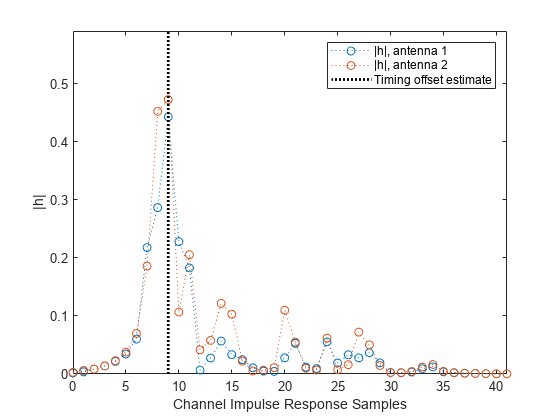nrPerfectTimingEstimate
Perfect timing estimation
Description
[
performs perfect timing estimation. To find the peak of the channel impulse response, the
function first reconstructs the impulse response from the channel path gains
offset,mag] = nrPerfectTimingEstimate(pathGains,pathFilters)pathGains and the path filter impulse response
pathFilters. The channel impulse response is averaged across all
channel snapshots and summed across all transmit and receive antennas before timing
estimation. The function returns the estimated timing offset offset and
the channel impulse response magnitude mag.
